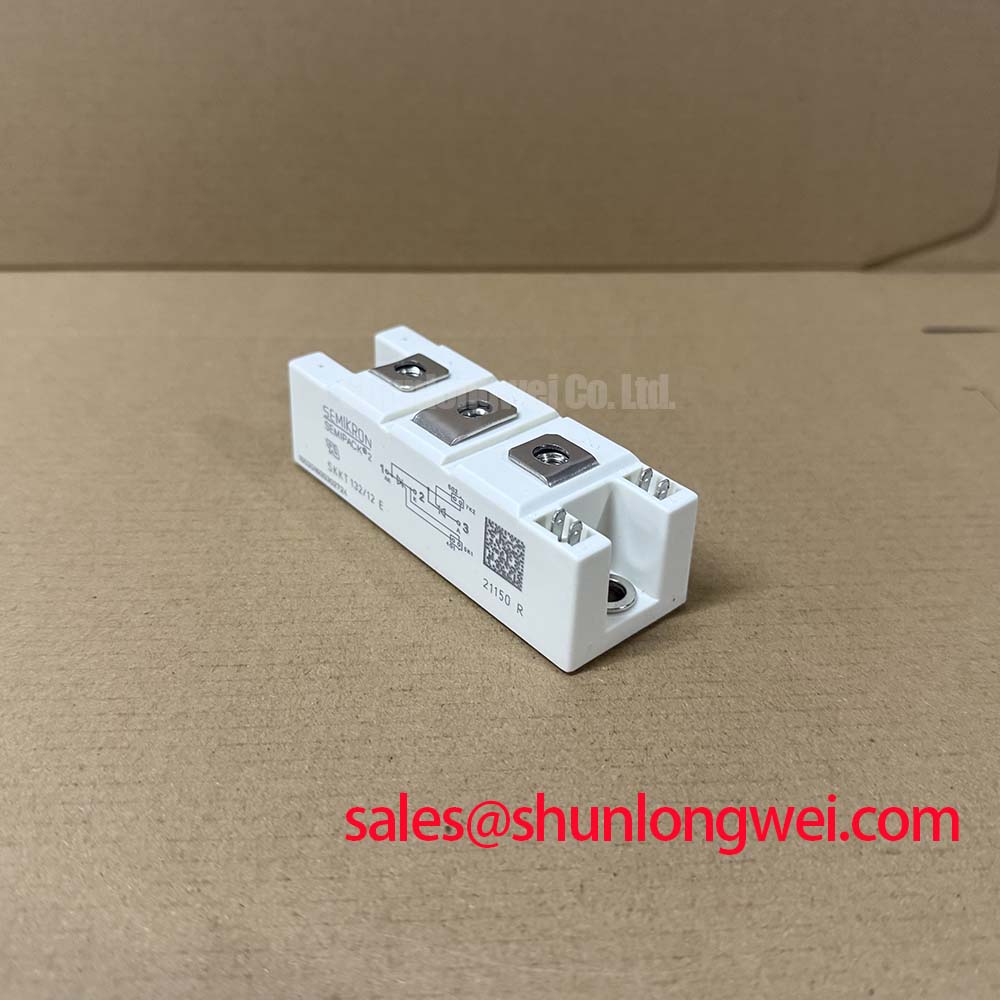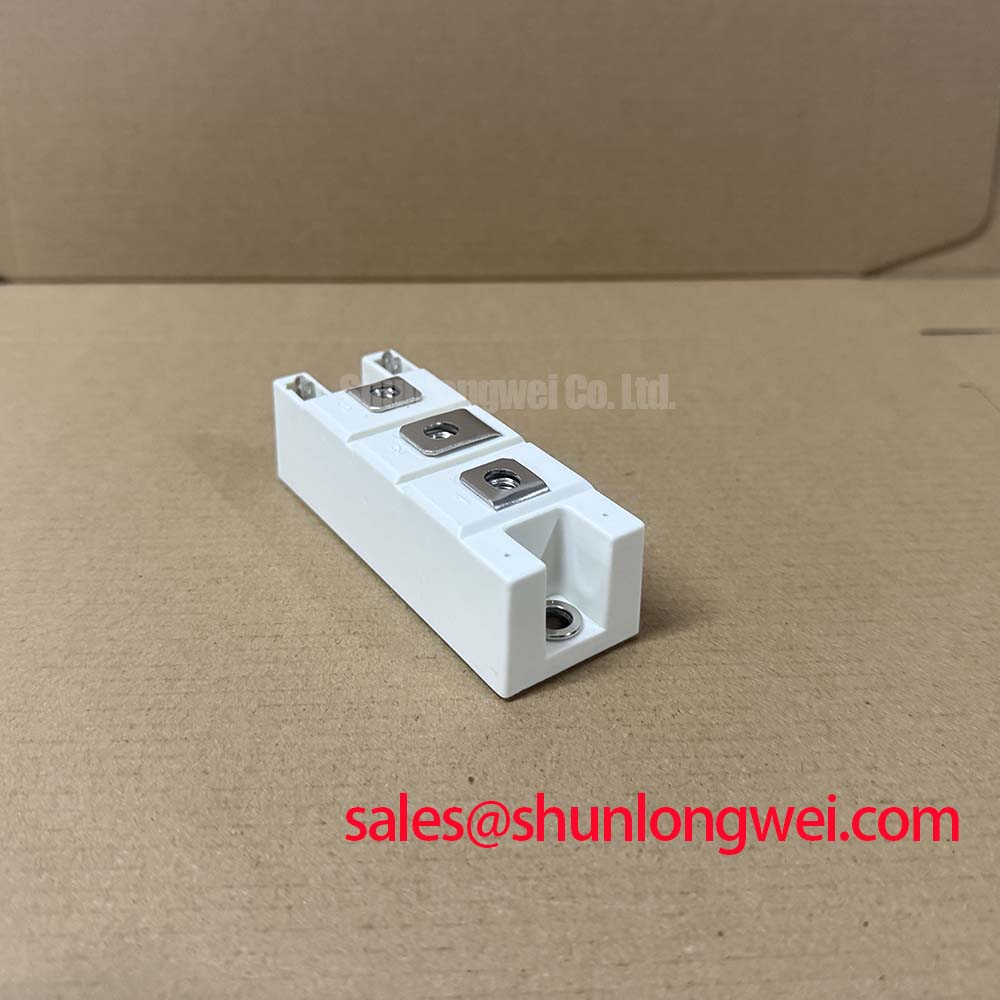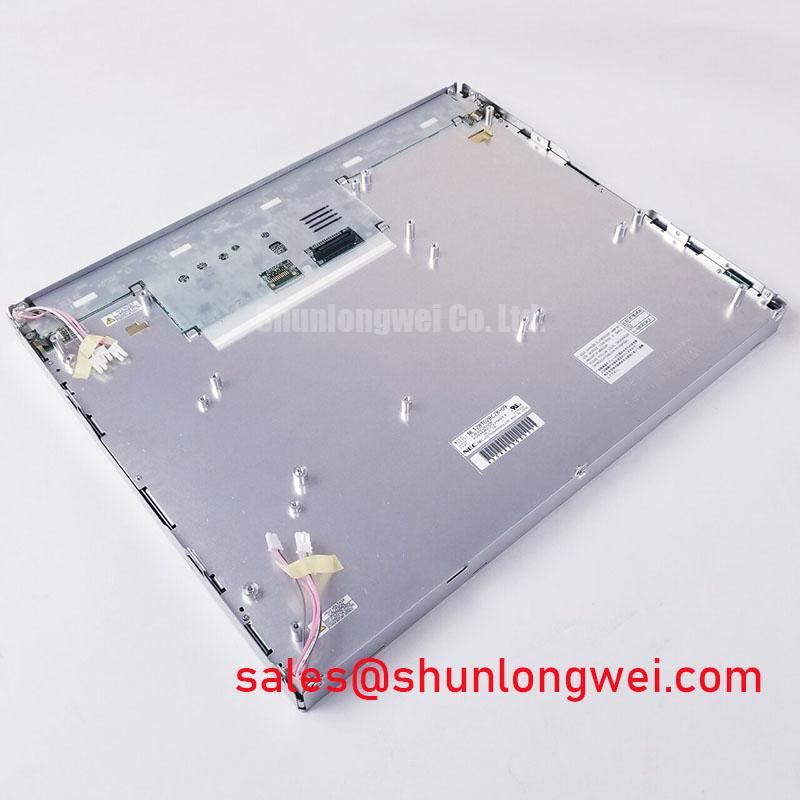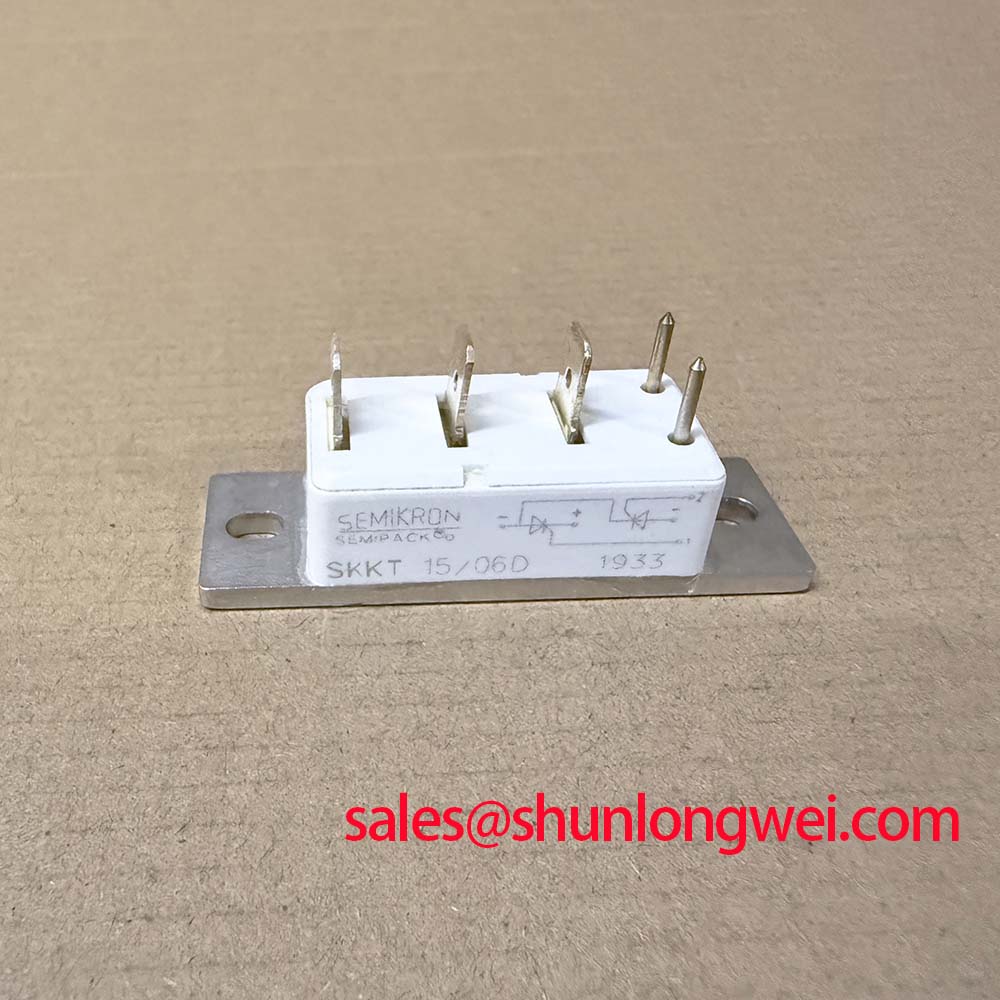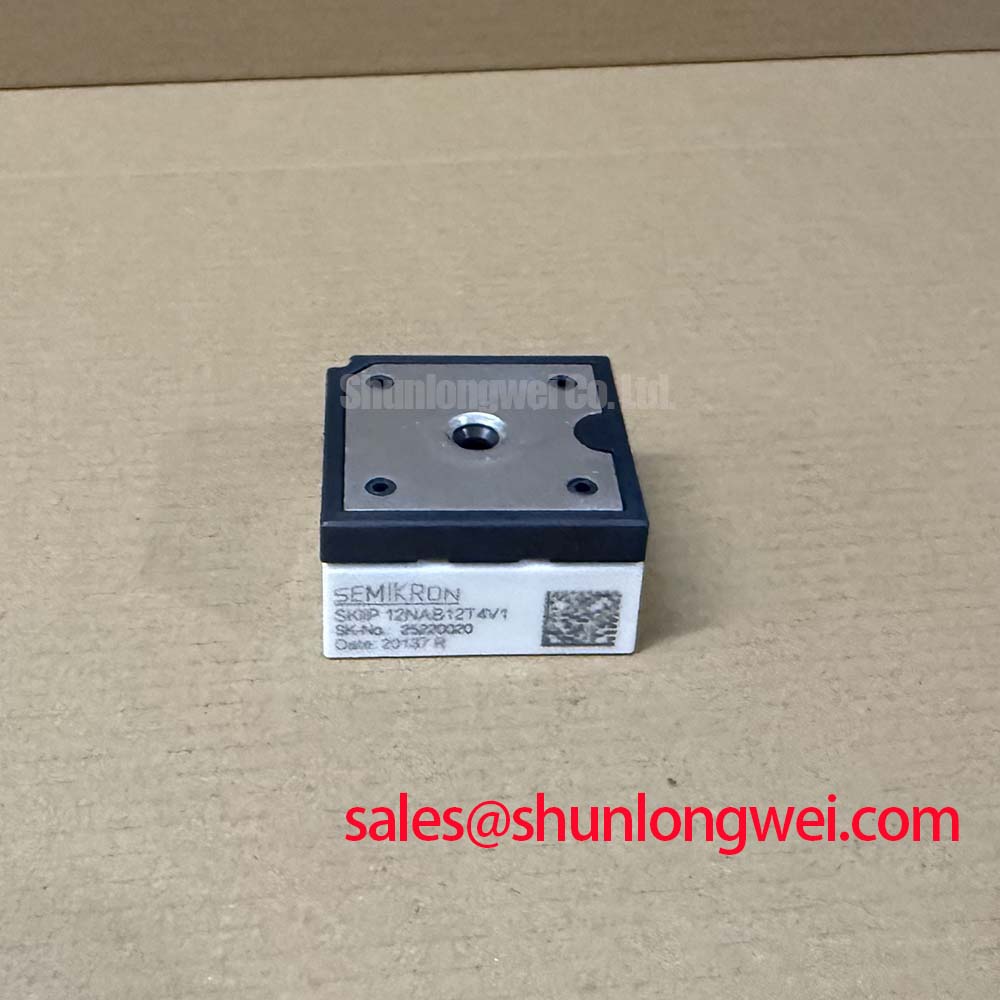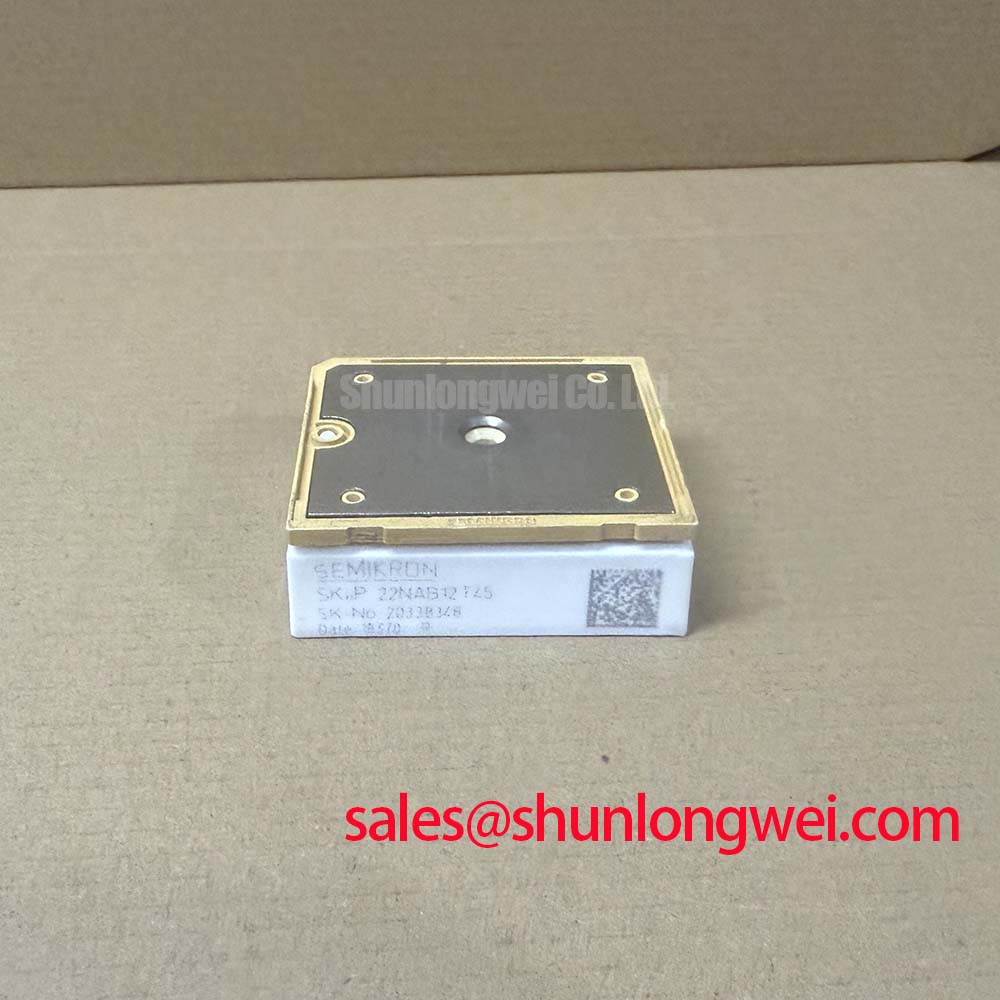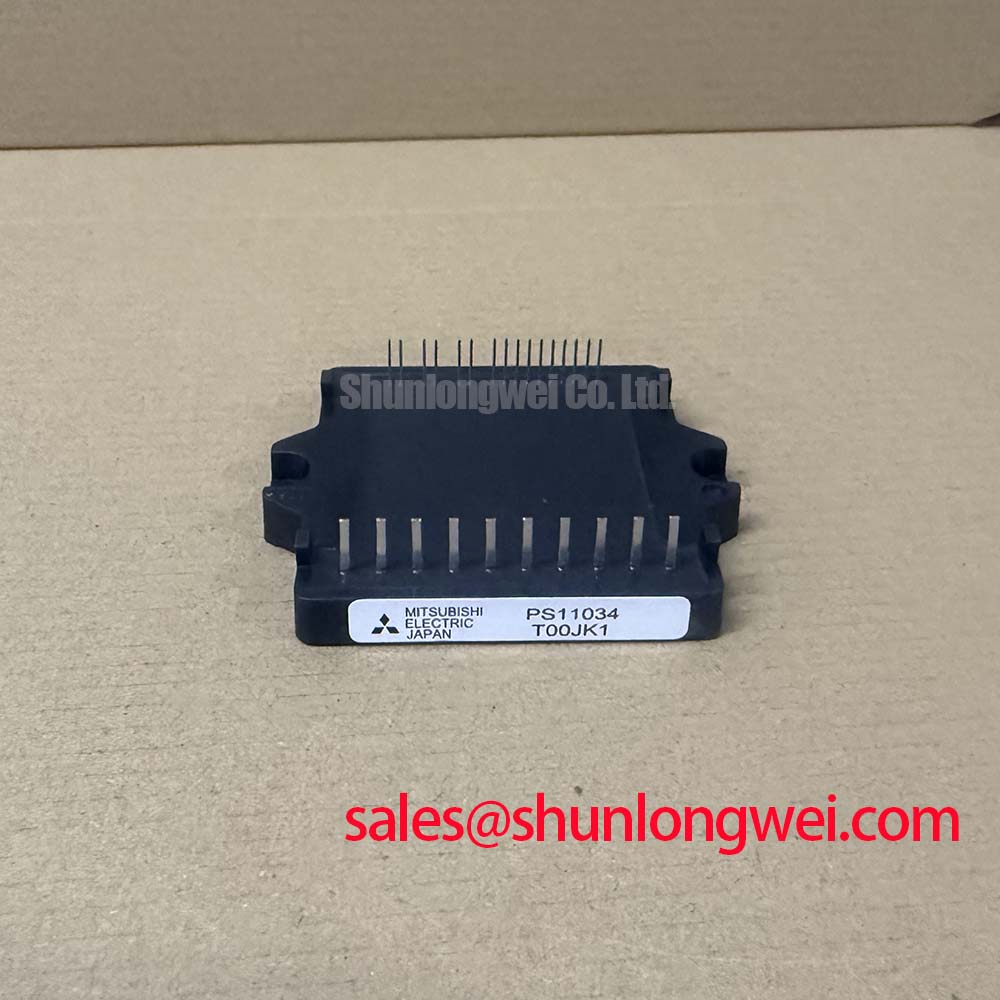SKKT 132/12E Thyristor Module: Datasheet & Thermal Analysis
Engineered for robust power control, the SEMIKRON SKKT 132/12E Thyristor Module leverages a thermally efficient design to deliver consistent, long-term operational stability. At its core, the module's architecture is centered around an aluminium oxide ceramic insulated baseplate, a key element for effective heat dissipation in demanding industrial applications. This design choice directly addresses the critical need for reliable power switching by ensuring thermal integrity under substantial electrical loads, setting a foundation for durable system performance.
Key Specifications at a Glance
1200V | 137A | Rth(j-c) 0.24 K/W
- Superior thermal transfer characteristics.
- High operational reliability.
Frequently Asked Engineering Questions for SKKT 132/12E
A selection of common queries addressed for design and implementation engineers.
Datasheet-Driven Comparison for System Design
When evaluating power control components, comparing key datasheet parameters provides a clear framework for decision-making. The SKKT 132/12E serves a specific operational window defined by its voltage and current ratings. For systems requiring higher repetitive voltage handling, a component such as the SKKT162/18E, with its 1800V rating, offers a different design margin. The choice between these modules is not about which is "better," but which aligns with the specific electrical and thermal demands of the target application. An engineer must weigh the VRRM against the system's expected peak voltages, just as the current rating must be matched to the load profile, always considering the thermal derating curves provided in the official documentation.
Inside the SEMIPACK 2 Housing: A Focus on Thermal Integrity
The long-term performance of any power module is intrinsically linked to its ability to manage heat. The SKKT 132/12E is constructed with specific features aimed at optimizing this critical function. The foundation of its thermal design is the aluminium oxide ceramic insulated metal baseplate, which serves two purposes: providing high dielectric strength for electrical isolation (2500V) and creating an efficient pathway for thermal energy to move from the thyristor junctions to the heatsink.
This module's thermal resistance from junction to case (Rth(j-c)) is specified at 0.24 K/W per thyristor. Think of thermal resistance as the width of a highway for heat; a lower value signifies a wider, less restrictive path, allowing more heat to escape quickly. This low resistance, combined with a maximum junction temperature (Tvj max) of 125°C, provides engineers with a significant operational margin for designing effective cooling solutions. What is the impact of its thermal design? It enables sustained operation at higher average currents without exceeding critical temperature limits, directly enhancing system reliability.
The Strategic Role of Reliable Thyristors in Modern Power Systems
In industrial automation, process control, and power infrastructure, unscheduled downtime translates directly to significant financial and operational losses. The selection of fundamental power components like thyristor modules is therefore a strategic decision that impacts the total cost of ownership (TCO). The SKKT 132/12E, with its emphasis on reliability through features like hard-soldered joints, addresses this industry imperative. The trend towards greater power density and more compact system designs further elevates the importance of thermally efficient components. By facilitating effective heat removal, this module allows for more compact heatsink designs or higher power throughput within a given system footprint, aligning with modern industrial design objectives.
Core Applications Where Thermal Stability is Paramount
The SKKT 132/12E is engineered for AC and DC power control applications where thermal stability and electrical robustness are key operational requirements. Its characteristics make it a suitable component for a range of industrial systems.
- AC Motor Soft Starters: By gradually ramping up the voltage applied to a motor, these modules mitigate the high inrush currents that can cause mechanical stress and electrical disturbances. The module's surge current handling is critical here.
- DC Motor Control: Used in rectifier circuits for controlling the speed and torque of DC motors, often found in machine tools and other industrial machinery.
- Temperature Control Systems: Ideal for regulating power to heating elements in industrial ovens, furnaces, and chemical processing equipment where precise and reliable power modulation is necessary.
- Professional Light Dimming: Provides robust power control for high-wattage lighting systems in theaters and studios, requiring smooth and reliable dimming performance.
For AC power controllers operating on up to 400V mains that require high surge current capability (ITSM > 2500A), this module offers a robust and thermally stable solution.
SKKT 132/12E Critical Performance Specifications
The following parameters are essential for system design and integration, derived from the official datasheet.
| Parameter | Value | Notes |
|---|---|---|
| Repetitive Peak Reverse Voltage (VRRM) | 1200 V | Defines the maximum reverse voltage the thyristors can block. |
| On-state Current (ITAV) | 137 A | Max. average on-state current at a case temperature (Tc) of 85°C. |
| Surge Current (ITSM) | 2600 A | Crucial for surviving inrush currents in motor and capacitive loads. |
| Thermal Resistance, Junction-to-Case (Rth(j-c)) | 0.24 K/W | Per thyristor; a key indicator of heat transfer efficiency. |
| Max. Junction Temperature (Tvj max) | 125 °C | The upper thermal limit for reliable operation of the semiconductor. |
| Isolation Voltage (Visol) | 2500 V | AC, 50 Hz, 1-minute test; ensures safety and isolates the power circuit. |
Download the complete Datasheet for detailed characteristics and performance curves.
A Strategic Outlook on Component Selection
Moving forward, the selection of power semiconductors will increasingly be viewed through the lens of long-term system value rather than initial component cost. Devices like the SKKT 132/12E, which are built with a clear focus on thermal robustness and manufacturing quality, represent a strategic investment in system uptime and reliability. As industrial systems become more interconnected and autonomous, the stability of core power conversion and control stages becomes even more critical. Prioritizing components with proven thermal management capabilities is a forward-looking design philosophy that mitigates future risks and supports the development of more resilient and efficient power electronic systems. For further reading on power device principles, explore this in-depth analysis of power module structures.


